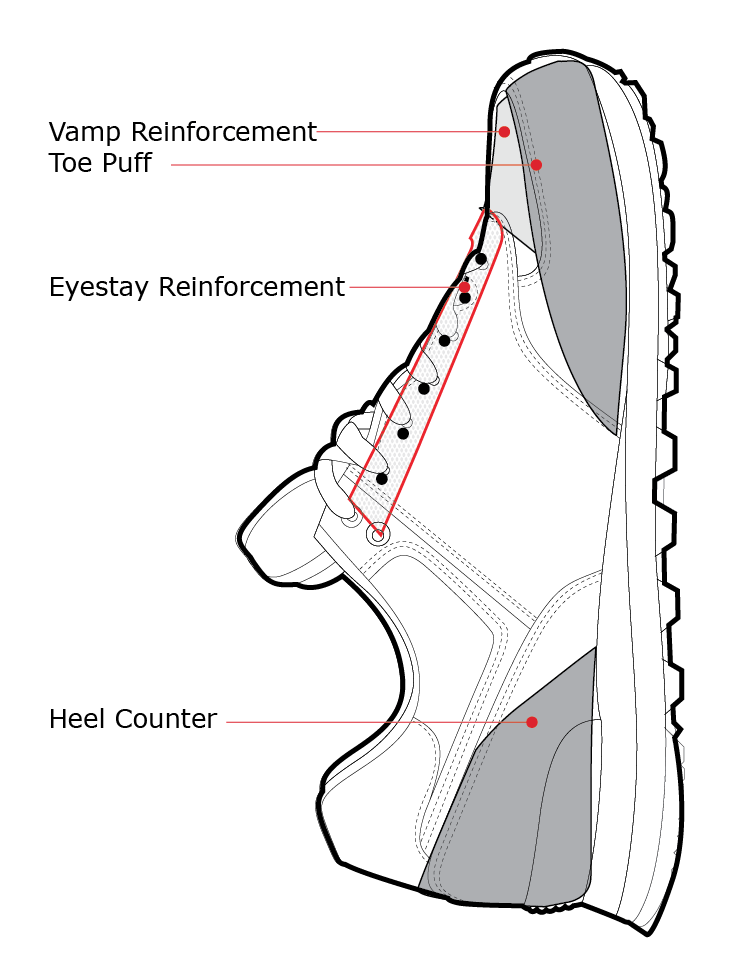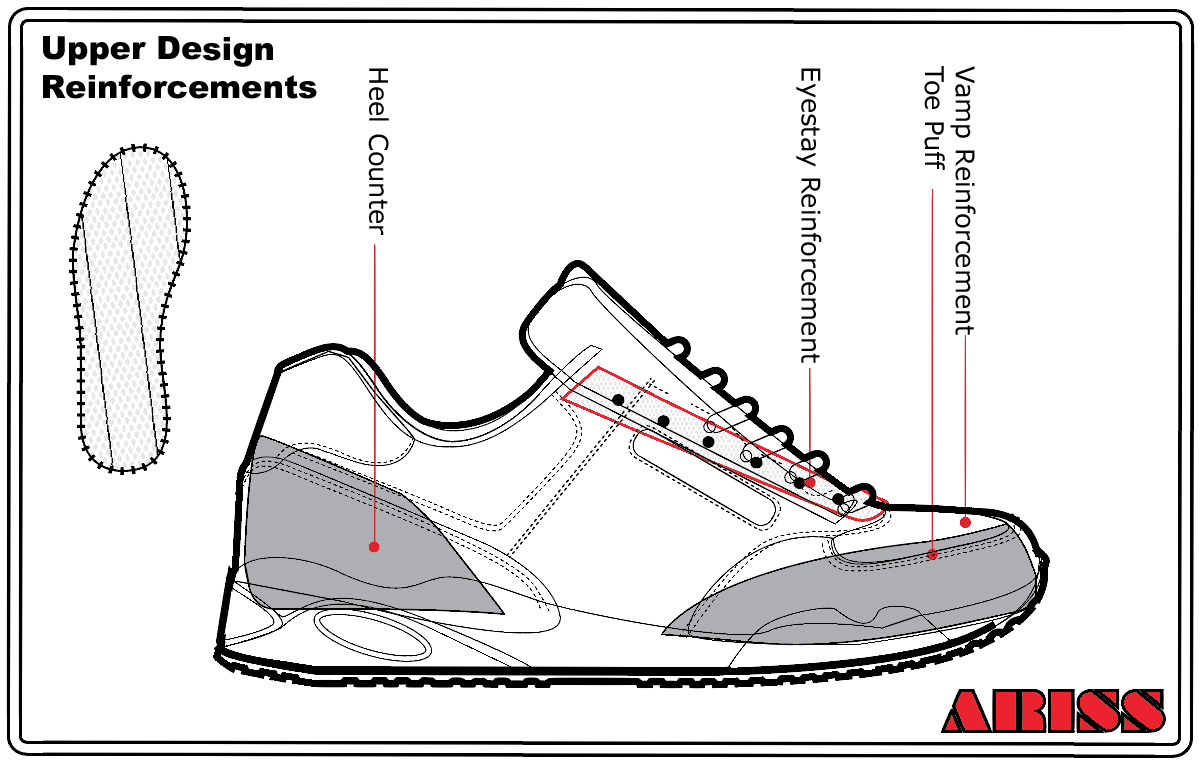What’s Inside Your Shoes? Shoe Reinforcements
 What is inside your shoes? A quick lesson on shoe reinforcements
What is inside your shoes? A quick lesson on shoe reinforcements
All the hidden parts inside your shoes that you cannot see are critically important to the look and function of the shoe. The most common shoe reinforcements are the toe counter (or puff), vamp reinforcement, heel counter, and eyestay reinforcement.
The stiffness or softness of these shoe reinforcement parts will determine if your shoe is a pliable, comfortable dress shoe or a trail-ready hiking boot.
Toe Puff
The toe counter or toe puff can be made of a non-woven polyester fabric saturated with a heat formable plastic. The material is die-cut from flat sheets to fit the shoe pattern and layered inside the shoe between the lining and the outer material. This material often has a heat activated cement on the surface. When the shoe upper is processed, during stitching and before the Strobel bottom is sewn on, the toe counter is heat formed. The front of the shoe is placed in a heater for a few minutes then the upper is clamped into a cooling fixture with a shaped metal form to set the toe shape.Heel Counter
The heel counter can be made by the same process and with similar but thicker materials that come in many different grades. The materials made by Texon and TecnoGi contain heat-moldable Surlyn plastic. For a better fit, a shoe factory may use a 3D injected plastic part instead of the sheet cut goods. For less expensive shoes, a material called chemi-sheet can be used. Chemi-sheet is a solvent activated material, it is functional but can crack. It is cheaper but not as good as the Surlyn plastic heel counters. The eyestay reinforcing material is called Super-Tuff. Super-Tuff is often found reinforcing punched hole eyelets or riveted eyelets on shoes. This material is a thin, non-woven laminated fabric that can be cut but is very difficult to tear. The name says it all!Vamp Reinforcement
The vamp reinforcement is often a thin layer of polyester fabric with adhesive backing. Placed on the vamp area, this material will stop the wearer’s toe from stretching the material or even stop a toenail from wearing through. For more information check out http://www.Texon.com and www.Tecnogi.com. Both make a wide range of reinforcement products for athletic and fashion shoes. Learn more about shoemaking and materials in our books How Shoes Are Made and the Shoe Materials Design Guide available in softcover or download editions so you can start reading today. What is inside your shoes? A quick lesson on shoe reinforcements
What is inside your shoes? A quick lesson on shoe reinforcements
All the hidden parts inside your shoes that you cannot see are critically important to the look and function of the shoe. The most common shoe reinforcements are the toe counter (or puff), vamp reinforcement, heel counter, and eyestay reinforcement.
The stiffness or softness of these shoe reinforcement parts will determine if your shoe is a pliable, comfortable dress shoe or a trail-ready hiking boot.
Toe Puff
The toe counter or toe puff can be made of a non-woven polyester fabric saturated with a heat formable plastic. The material is die-cut from flat sheets to fit the shoe pattern and layered inside the shoe between the lining and the outer material. This material often has a heat activated cement on the surface. When the shoe upper is processed, during stitching and before the Strobel bottom is sewn on, the toe counter is heat formed. The front of the shoe is placed in a heater for a few minutes then the upper is clamped into a cooling fixture with a shaped metal form to set the toe shape.The Ultimate Shoe Material Textbook
Start with an in-depth study of material types available for modern shoemaking. Learn the technical details of material specifications. 195 pages and 300 color photos.
on sale $39.99

